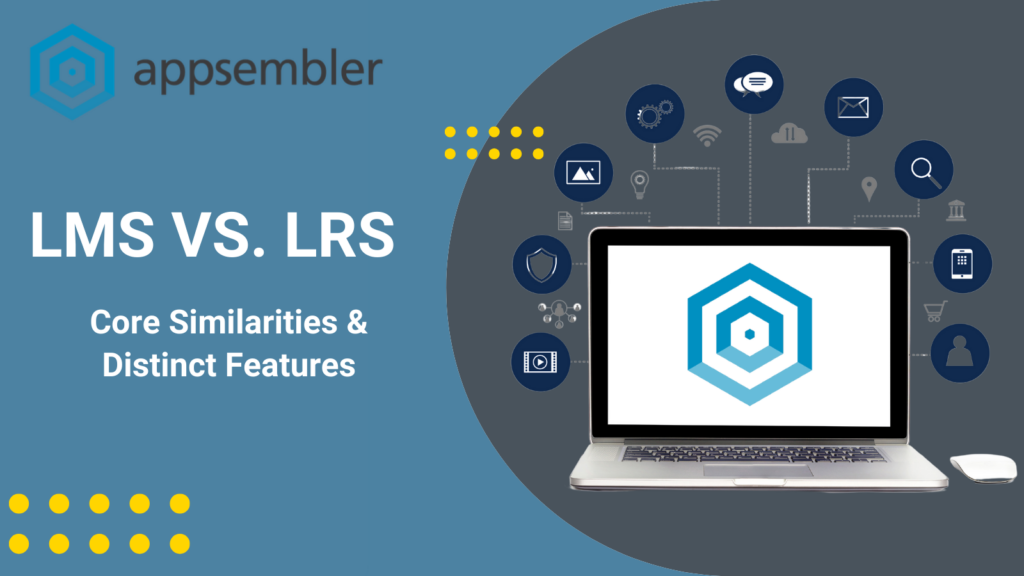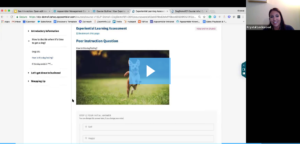In the dynamic world of eLearning, understanding the functionalities and differences between Learning Management Systems (LMS) and Learning Record Stores (LRS) is crucial. This article dives into the core purposes, features, and distinctions of LMS and LRS, exploring how they integrate and evolve in modern educational and corporate training environments. It provides insights into making informed decisions for implementing these technologies effectively.
Key Takeaways
- LMS vs. LRS Purpose: LMS focuses on content delivery and management, while LRS tracks detailed learning experiences and data.
- Top Features: Essential features of LMS include course management and user interface, whereas LRS emphasizes data capture and analytics.
- Cost Considerations: Implementing an LMS generally incurs higher costs due to broader functionalities compared to the more specialized LRS.
- Choosing the Right System: Decisions should be based on organizational learning needs, with LMS for content delivery and LRS for detailed data tracking.
- Emerging Trends: Trends in both LMS and LRS technologies include AI integration, personalized learning, and immersive technologies like VR/AR.
Table of Contents
Overview of Learning Management Systems (LMS)
Definition and Primary Functions
At its core, an LMS is a software application or web-based technology designed to plan, implement, and assess a specific learning process. Primarily, LMSs are used for eLearning practices and are known for their robustness in facilitating educational content creation, distribution, and management. They serve as a one-stop shop for educators and learners, providing a centralized repository for course material, a platform for delivering coursework, and a framework for tracking student progress.
Key Features and Common Uses
In educational settings, LMSs host and deliver courses, enabling students to access learning material anytime and anywhere. This flexibility makes LMSs particularly attractive in today’s fast-paced, digitally-driven world. In corporate environments, LMSs are pivotal in training and development, helping to streamline the onboarding process, conduct skills gap analyses, and support continuous professional development.
Key features of an LMS typically include course management, user registration, progress tracking, and reporting capabilities. Advanced systems may also offer features like gamification, social learning opportunities, and integration with other tools and systems.
Examples of Popular LMS Platforms
Popular LMS platforms such as Moodle, Blackboard, and Canvas have become household names in the world of eLearning. Each platform offers its unique blend of features, but all share the common goal of simplifying the learning process for educators and learners alike. These platforms exemplify the capabilities of LMSs to adapt to various learning styles and educational needs, making them indispensable tools in the arsenal of modern education and training strategies.
Overview of Learning Record Stores (LRS)
Definition and Main Roles
LRS are specialized systems designed to store, retrieve, and share learning records, primarily in the context of xAPI (Experience API) environments. They act as a repository for learning data, capturing a detailed digital record of a learner’s interactions, both within and outside traditional learning environments. Unlike LMS, which primarily focuses on delivering and managing learning content, LRS is dedicated to tracking and recording learning experiences, making it an essential component for comprehensive learning analysis and personalization.
Core Functionalities and Distinctions from Traditional Databases
The core functionality of an LRS lies in its ability to collect a wide array of learning data from various sources. This includes tracking online course progress, real-world experiences, informal learning, and more. The data is then standardized into xAPI statements, structured as “actor-verb-object” and can include detailed information such as the context and results of the learning experience.
LRS’s specialization in handling xAPI data sets it apart from traditional databases, which is far more nuanced and complex than the data typically stored in conventional learning databases. This specialization allows for more detailed tracking and analysis, offering insights beyond course completion rates and test scores. The flexibility of xAPI enables LRS to capture diverse learning experiences, painting a holistic picture of a learner’s journey.
Examples of LRS Implementations
Platforms like Learning Locker, Watershed, and Yet Analytics are great examples. These platforms showcase the LRS’s capability to integrate with various learning technologies, including LMS, mobile learning apps, and performance support tools. By capturing and analyzing detailed learning data, these LRS implementations empower organizations to make data-driven decisions, tailor learning experiences to individual needs, and ultimately enhance the overall effectiveness of their training programs.
Key Similarities Between LMS and LRS
Despite their distinct functionalities, LMS and LRS share common ground in several aspects, especially in data handling, educational context, and user engagement. Both systems are integral in collecting and managing data related to learning experiences. In the educational context, they work towards the same goal – enhancing the learning experience by providing access to educational content and insights into learning patterns.
The integration of LMS and LRS into a cohesive learning ecosystem represents a powerful synergy. An LMS can deliver and manage educational content, while the LRS can track and analyze the learning experiences from that content. Combined, they provide a comprehensive view of the learner’s journey, from content interaction to real-world application. This integration enables educators and corporate trainers to tailor learning experiences, ensuring they are effective and engaging.
By working in tandem, LMS and LRS can significantly enhance user engagement. The LMS engages learners with content and interactive elements, while the LRS offers insights into how learners interact with that content, allowing for a more personalized learning experience. This dual approach ensures that learners not only consume content but are also engaged in a way that promotes deeper learning and retention.
Key Differences Between LMS and LRS
Functionality: Content Delivery vs. Data Tracking
The primary difference between an LMS and an LRS lies in their core functionalities. An LMS is primarily focused on content delivery, where educational courses are hosted, accessed, and managed. It provides a structured environment for learners to access learning materials, participate in courses, and receive assessments.
In contrast, an LRS is dedicated to data tracking. It does not deliver content but rather records detailed data about the learning process. This includes tracking learner interactions, both within the LMS and in other learning environments, and storing these as xAPI statements. This data is invaluable for analyzing learning patterns and effectiveness.
User Interaction and Experience
The user experience between the two also differs significantly. LMS platforms are designed with the end-user in mind, offering a user-friendly interface where learners can easily navigate through courses, track their progress, and engage with learning materials. The LRS, on the other hand, operates mostly in the background. It is more focused on data collection and analysis, and as such, its interface is more data-centric and typically used by administrators and educators for analytical purposes.
Scalability and Customization
In terms of scalability and customization, LMS platforms often offer a range of options to cater to different learning needs and organizational sizes. They can be scaled to accommodate a growing number of users and can be customized to align with specific learning objectives and branding requirements.
LRS, being more specialized, offers scalability mainly in terms of data handling. It can manage vast amounts of learning data from multiple sources, making it ideal for large organizations with complex learning ecosystems. However, its customization is more focused on data integration and analysis rather than user experience.
In summary, while LMS and LRS serve different purposes in the eLearning landscape, their combined use can lead to a more enriched and effective learning experience. Understanding their distinct roles and functionalities is key for organizations to leverage their full potential in the context of modern learning strategies.
How LMS and LRS Complement Each Other
In blended learning environments, the synergy between LMS and LRS is not just beneficial; it’s transformative. The LMS serves as the frontline interface where learners interact with courses and content, while the LRS works quietly in the background, meticulously recording these interactions. This complementary relationship enables a richer, more nuanced understanding of the learning process.
Consider a corporate training program that uses an LMS for delivering training modules and an LRS for tracking employee engagement and application of skills. The LMS facilitates the training, but the LRS provides insights into how employees are applying what they learn in real-world scenarios. This combination allows for continuous improvement of training programs based on actual data rather than assumptions.
A notable example of this synergy is seen in higher education institutions that have integrated LRS into their LMS. This integration enables educators to track not just course completion rates, but also student engagement levels, learning patterns, and application of knowledge, leading to more tailored and effective teaching strategies.
Choosing Between LMS and LRS: Factors to Consider
When deciding whether to implement an LMS, an LRS, or both, organizations must consider several key factors to ensure that their choice aligns with their specific needs and goals.
- Organizational Needs: The primary consideration is the organization’s specific learning objectives. If the focus is on delivering and managing educational content, an LMS is essential. However, if the organization seeks detailed tracking of learning experiences and data analytics, an LRS becomes indispensable. For a comprehensive approach that covers both content delivery and detailed tracking, integrating both systems is the optimal choice.
- Budget Constraints: Budget plays a crucial role in this decision-making process. LMS and LRS systems come with varying price tags, depending on their features and capabilities. Organizations must balance the cost against the expected return on investment in terms of improved learning outcomes and operational efficiencies.
- Scalability: The chosen system(s) should be able to grow with the organization. This means they must be scalable to accommodate an increasing number of users and capable of adapting to evolving learning needs and technologies.
- User Base Considerations: The nature of the user base—whether they are employees, students, or customers—will influence the choice. The system should be user-friendly and cater to the specific learning styles and requirements of the target audience.
- Technological Requirements: Compatibility with existing technological infrastructure is crucial. The selected system should integrate seamlessly with other tools and platforms used by the organization, ensuring a smooth and efficient learning ecosystem.
Future Trends in LMS and LRS
The future of LMS and LRS will likely be shaped by several emerging technologies and methodologies, with a strong focus on personalization, artificial intelligence (AI), and immersive learning experiences.
- Increased Personalization: Future developments in both LMS and LRS are expected to emphasize personalized learning paths. Using AI and machine learning, these systems can provide recommendations and content tailored to individual learning styles and preferences.
- Integration of AI and Analytics: AI will play a significant role in both LMS and LRS, particularly in enhancing the capabilities of LRS in predictive analytics and learner engagement tracking. This will allow for more proactive interventions and adaptive learning strategies.
- Immersive Learning Experiences: Integrating virtual and augmented reality (VR/AR) into LMS platforms is likely to gain momentum, offering more engaging and interactive learning experiences.
- Interoperability and Seamless Integration: As the eLearning ecosystem becomes more complex, the interoperability between various systems, including LMS and LRS, will become increasingly important. This will ensure a seamless flow of data and a cohesive learning experience.
- Focus on Data Privacy and Security: With the increasing use of LRS to track detailed learning data, there will be a heightened focus on data privacy and security. Ensuring the ethical use and protection of learner data will be paramount.
Conclusion
LMS and LRS serve distinct yet complementary roles in the landscape of eLearning. While LMSs are pivotal in content delivery and management, offering structured environments for learning, LRSs excel in capturing detailed data on learning experiences, providing valuable insights for analysis and personalization. Their integration forms a robust framework that enhances the effectiveness and efficiency of learning processes. When choosing between these systems, considerations such as organizational needs, budget, scalability, user base, and technological requirements are crucial. The evolving trends in AI, personalization, and immersive learning experiences will further refine and elevate the roles of LMS and LRS in educational and corporate settings. Educators, corporate trainers, and eLearning professionals are encouraged to continue exploring these dynamic tools to make informed decisions that align with their strategic goals, ensuring a future of enriched and impactful learning experiences.
Frequently Asked Questions
The primary purpose of a Learning Management System (LMS) is to facilitate the delivery, management, and tracking of learning and training programs. An LMS provides a centralized platform for educators and learners, offering functionalities like course creation, content distribution, and assessment management. In contrast, a Learning Record Store (LRS) is designed for storing and retrieving detailed learning records. It focuses on capturing and analyzing data about learners’ interactions and experiences, often across diverse learning environments. While an LMS primarily delivers and manages content, an LRS serves as a repository for learning data, enabling comprehensive analysis of learning activities.
When selecting an LMS, top features to consider include course management capabilities, user-friendly interface, assessment and tracking tools, customization options, and integration with other systems. For an LRS, the key features should focus on its ability to accurately capture and store a wide range of learning data, compatibility with xAPI standards, robust data analytics tools, and interoperability with various learning technologies. Additionally, both systems should offer scalability, data security, and responsive customer support.
The cost of implementing an LMS or an LRS varies based on factors like the platform’s features, scalability, and the size of the user base. Generally, LMS platforms can be more expensive due to their comprehensive content management and delivery functionalities. In contrast, LRSs, being more specialized in data tracking and analysis, might be less costly but can vary depending on the sophistication of data analytics required. Organizations should also consider ongoing costs such as maintenance, updates, and training for staff, alongside the initial investment.
An organization should assess its specific needs and objectives to decide whether an LMS, an LRS, or both are required. If the focus is on delivering and managing educational content, an LMS would be more suitable. However, if the organization is keen on detailed tracking of learning experiences and data analytics, an LRS is essential. For a comprehensive approach encompassing both content delivery and in-depth tracking of learning experiences, integrating both an LMS and an LRS would be ideal. The decision should align with the organization’s learning strategy, technological infrastructure, and budget.
Current trends in LMS and LRS technology include the integration of artificial intelligence and machine learning for personalized learning experiences, using big data analytics for enhanced decision-making, and incorporating immersive technologies like VR and AR for engaging learning experiences. Additionally, there’s an increasing emphasis on mobile learning, social learning functionalities, and improved interoperability between different systems and tools. The focus is also shifting towards more user-centric designs and enhanced data security and privacy measures. These trends reflect a move towards more adaptive, responsive, and data-driven learning environments.



